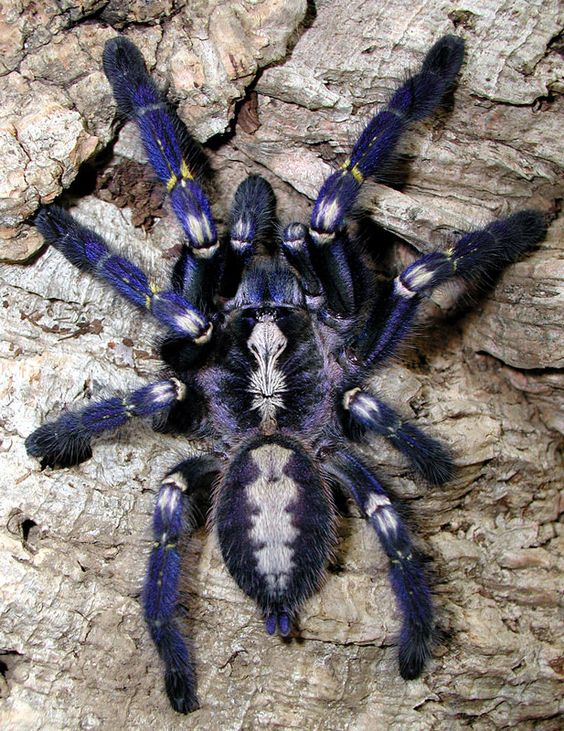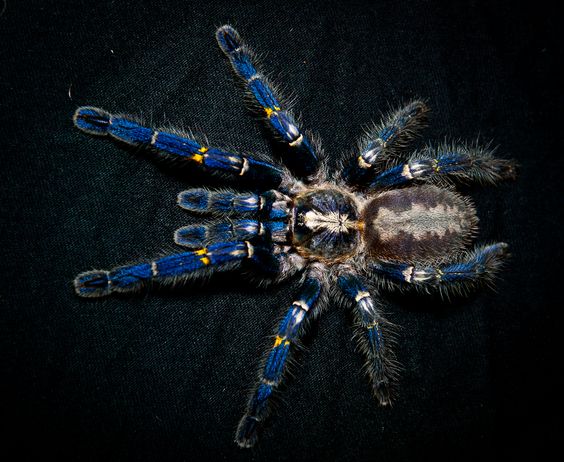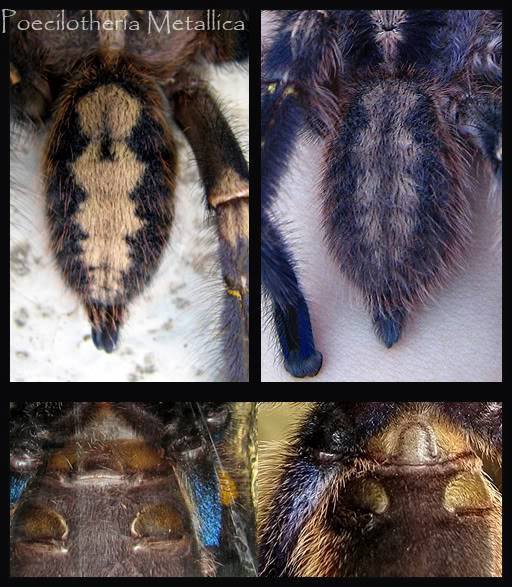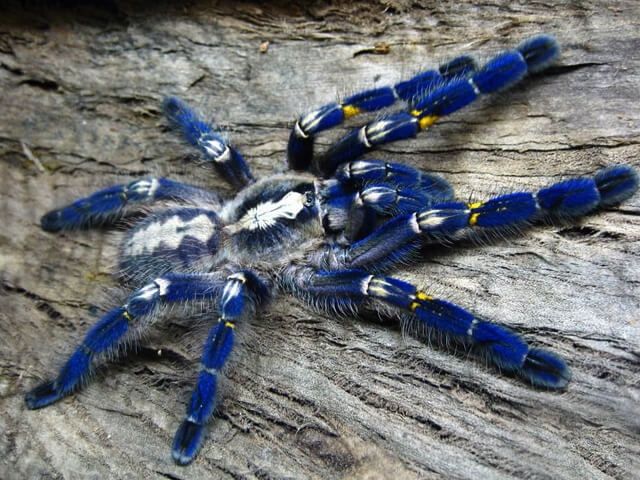There are many species of spiders. Some are tiny and live in the corner of your room, others are larger and scary and can be found in the dark corners of your house. But One species stands out from all other spiders in the world, the Poecilotheria Metallica – the most beautiful spider in the world.
Poecilotheria Metallica also known as Gooty Sapphire or Peacock Tarantula is an old-world species of spider in the family tarantulas.

Is Poecilotheria Metallica poisonous?
One of the most beautiful tarantulas in the world is also venomous. This species possesses medically significant venom. The bite of a Poecilotheria Metallica tarantula is said to be “medically significant” and quite painful.
A bite can cause excruciating pain, nausea, and cramping. These symptoms can last for several days. An adult tarantula of this species have two fangs and could cause significant damage.
There has never been a recorded human death from its bite, all we know that its bite is painful but not deadly. They often distribute a dry bite though to preserve their venom for prey. Like other arachnid species, they use venom to kill small prey, so the strength and amount of their venom is toxic only to their prey.
Poecilotheria Metallica Habitat and distribution
Poecilotheria Metallica commonly known as the Gooty sapphire tarantula is named after its discovery in 1899 in a railway timber yard in the town of Gooty, Andra Pradesh, India.
However, this may be inaccurate as it is believed that it was accidentally transported there by train. Its actual habitat is about 100 kilometers east of gooty in the forest of Andhra Pradesh.
It is only found within a 100-square-kilometer area of the reserve forest. This area is still highly disturbed and the P Metallica is listed as critically endangered due to habitat destruction and the pet trade.
It was rediscovered after 102 years, in 2001 in the forest between Nandyal and Giddalur.

Physical appearance
When you look at the pictures of these tarantulas you might think it’s photoshopped. It’s hard to believe that such a beautiful tarantula exists, but it’s true this tarantula is really beautiful and colorful.
Their bright coloring and large size make them a striking sight, with some boasting elaborate patterns and markings that make them stand out from other tarantulas.
Poecilotheria Metallica is easily distinguished from the others by its metallic blue coloration and bright yellow stripes on the legs. These tarantulas have a beautiful geometric body coloration and are the only Poecilotheria species that has blue hair and color.
This blue color gets much brighter as a Poecilotheria Metallica matures, as these tarantulas are much less chromatic when they are young. Male Gooty Sapphire Ornamental tarantulas also tend to be more vibrant in color.
Poecilotheria Metallica male vs female
They are sexually dimorphic, after a certain size in females the black stripe that runs through the middle of the white on the abdomen will tend to fade.
As they get larger sometimes it will disappear altogether. There is also a dot that remains toward the upper part of the abdomen. Males have a tendency to retain this stripe that runs up the middle of the abdomen.
But as always these are not accurate methods of determining gender but they tend to be true the majority of the time.
The female will have a wider smoother epigastric furrow while the males will be narrower and have a clearly defined horseshoe shape. Of course, determining gender through a molt is always the most accurate method but not always necessary if you have a trained eye.
The males having shorter life spans will retain that beautiful blue coloration throughout their entire lives and will be even brighter as they age. Females however will begin to fade after a few years. Adult Poecilotheria Metallica can grow up to 6 to 8 inches (15 to 20 cm).

Diet and behavior
P metallics are arboreal so they mostly feed on flying insects. In the wild, it lives in holes of tall trees where it makes asymmetric funnel webs and catches its prey.
Poecilotheria Metallica tarantulas can eat insects such as crickets, flies, moths, and roaches. A small sling might eat half of a cricket whereas an adult might eat several large crickets.
The species is skittish and will flee when light shines upon it, as it is a photosensitive species. It’s also called the Peacock Parachute spider because of its habit to jump and when disturbed, it will just parachute down like a leaf to the ground.
Poecilotheria Metallica tarantulas are quite shy and more likely to retreat to their hideout when approached. However they can be quite fast and defensive, they will bite if continuously provoked and if they feel threatened.
The spider will try to flee at first. Persistent provocation can result in a bite. The bites are very painful and can result in hospitalization.
Life cycle and mating behavior
Females of this species can live 10 years and on rare occasions up to 15 while males only live about 3 to 4.
The Male shows interest in female by tapping its legs. Cannibalism may occur during mating if the female is hungry obviously seeing her potential suitor as lunch. The male is ready to mate once he has created a sperm web.
Males and females of sexual maturity come together for the purpose of mating. Ideally, both will be fairly freshly molted. The male separates from the female as mating completes.

Population and threats to the species’ survival
Poecilotheria Metallica current in the wild is unknown because it’s rarely seen in the wild since its discovery. In large parts of its range, Gooty sapphire ornamental has been severely affected by habitat loss, fragmentation, predators, and pet trade.
Due to its small population size and restricted range, the International Union for Conservation of Nature (IUCN) has listed this species as Critically Endangered.
The habitat where the species occurs is completely degraded due to lopping for firewood and cutting for timber. The habitat is under intense pressure from the surrounding villages as well as from insurgents who use forest resources for their existence and operations.
The Gooty ornamental is a true showpiece, smuggled to America and Europe in the pet trade.
Conservation measures taken so far
The Gooty Sapphire ornamental is not in short supply in captivity and hobby section. They are bred and sold in captivity to pet lovers in many regions.
They’re currently not on the banned list in the united states it’s important to breed this species in captivity. Because it may only be a matter of time that the only specimens of the species we have left will be the ones in captivity.
In order to save the species, please don’t buy wild-caught Poecilotheria Metallica, but get them from successful breeders. As of now no conservation measures are taken by the government to save this species.

